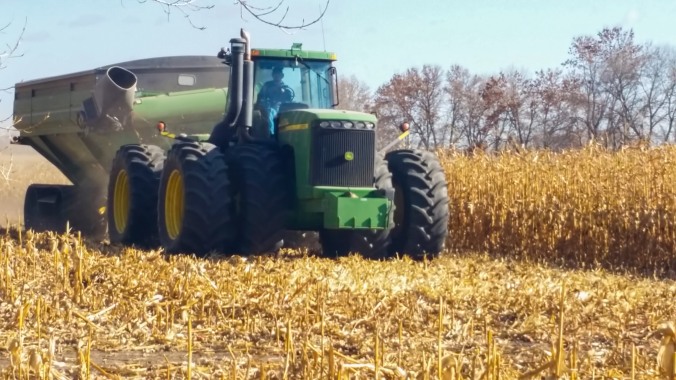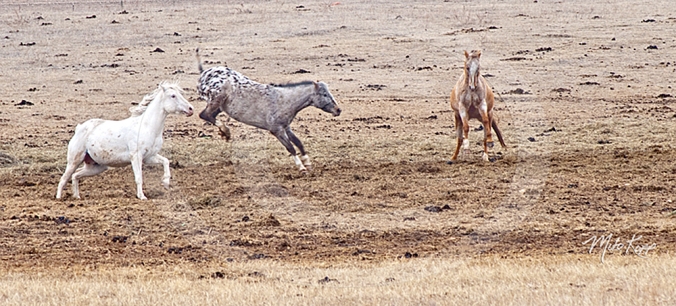
A $500,000 John Deere combine comes to the end of a 12 rows of sunflower.
They are million dollar crops in million dollar weather using million dollar machines.

Taking advantage of the million-dollar weather, a half-million dollar combine opens a field of corn, making the first pass. The machine “combines” several processes, slicing the corn stalk, removing the ear from the stalk and the kernels from the cob, separating the chaff to blow out the back of the machine.
There’s a lot a farmer can do to produce a profitable crop…and a lot he can’t do — it’s out of his hands. This fall, North Dakota farmers are reminded as they bring in their crops, they made some good choices on nutrients, timing, crop variety. They know too, that this wonderful fall weather of no snow and warm temps is helping them get the job done.

Farmers put in long days at harvest, taking advantage of every weather opening provided. If it’s raining or snowing the stalks are too tough and the crop has too much moisture to harvest.
It’s a very expensive job. One combine, such as the first one above, working a sunflower field, is about a half-million dollars. That’s just part of the investment.  The immense fields, some a mile-long are too large for a combine to make it across the field and back without emptying. So, the combine operator will empty on the go, continuing to pluck the crop from the stalks while emptying in to a grain cart that carries the crop to a waiting semi truck.
The immense fields, some a mile-long are too large for a combine to make it across the field and back without emptying. So, the combine operator will empty on the go, continuing to pluck the crop from the stalks while emptying in to a grain cart that carries the crop to a waiting semi truck.

A tractor and grain cart roll along side of a working combine to receive what is in the combine’s hopper, then carry it back to a waiting truck. North Dakota supplies the world with food and fuel, as the wind turbines in the background create electricity for places such as Minnesota and Wisconsin.

A four-wheel drive John Deere tractor with large dual wheels to prevent wheel depressions in the soft earth pulls a grain cart on tracs. It follows the combine to retrieve a load of corn when the combine’s hopper is full.
Even though the work is uplifting, gathering in the fruit of a year’s labor’s, it can be challenging when the weather does not cooperate. In those years, the harvest is completed in the snow — after the cold-blooded diesel engines on the large tractors get started, which is a huge and frustrating task on most mornings. That’s another reason this year’s million-dollar weather has been helpful — the machinery is not having to work hard with sluggish oil and brittle components.

Not every harvest takes place in accommodating weather. Most years, this is the view from the tractor pulling a grain cart down the road.
Despite their investment, it’s possible they will have nothing to show for it this year. Northern plains farmers, such as these in North Dakota, have millions of dollars invested in their harvest equipment, and millions more in their planting equipment. The weather is only one of the factors outside of their control; prices are abysmal. Crop prices, such as corn, are at or near the break-even point.
That means that for all the work, for all the investment, it’s likely that many farmers will not make a profit this year. They will go unpaid for their labor, barely earning enough money to pay the bank for the loans they took out to buy their equipment. Hopefully they will have enough money to plant next year’s crop.
A Depression-era song that Ry Cooder recorded sums it up:
We worked through spring and winter, through summer and through fall
But the mortgage worked the hardest and the steadiest of us all
It worked on nights and Sundays, it worked each holiday
Settled down among us and it never went (away
The farmer comes to town with his wagon broken down
The farmer is the man who feeds us all
If you only look and see I know you will agree
That the farmer is the man who feeds us all


























